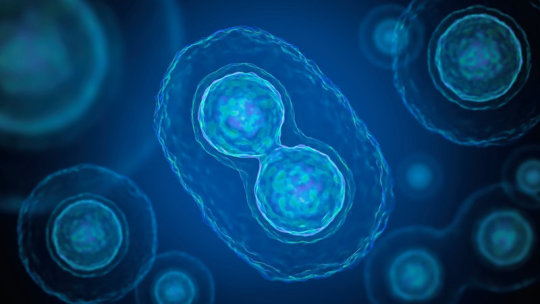HOME
The first cells might have used temperature to divide

A simple mechanism could underlie the growth and self-replication of protocells -- putative ancestors of modern living cells -- suggests a new study. Protocells are vesicles bounded by a membrane bilayer and are potentially similar to the first unicellular common ancestor (FUCA). On the basis of relatively simple mathematical principles, the proposed model suggests that the main force driving protocell growth and reproduction is the temperature difference that occurs between the inside and outside of the cylindrical protocell as a result of inner chemical activity.
"The initial motivation of our study was to identify the main forces driving cell division," says the study author Romain Attal of Universcience. "This is important because cancer is characterized by uncontrolled cell division. This is also important to understand the origin of life."
The splitting of a cell to form two daughter cells requires the synchronization of numerous biochemical and mechanical processes involving cytoskeletal structures inside the cell. But in the history of life, such complex structures are a high-tech luxury and must have appeared much later than the ability to split. Protocells must have used a simple splitting mechanism to ensure their reproduction, before the appearance of genes, RNA, enzymes, and all the complex organelles present today, even in the most rudimentary forms of autonomous life.
In the new study, Attal proposed a model based on the idea that the early forms of life were simple vesicles containing a particular network of chemical reactions -- a precursor of modern cellular metabolism. The main hypothesis is that molecules composing the membrane bilayer are synthesized inside the protocell through globally exothermic, or energy-releasing, chemical reactions.
News Source